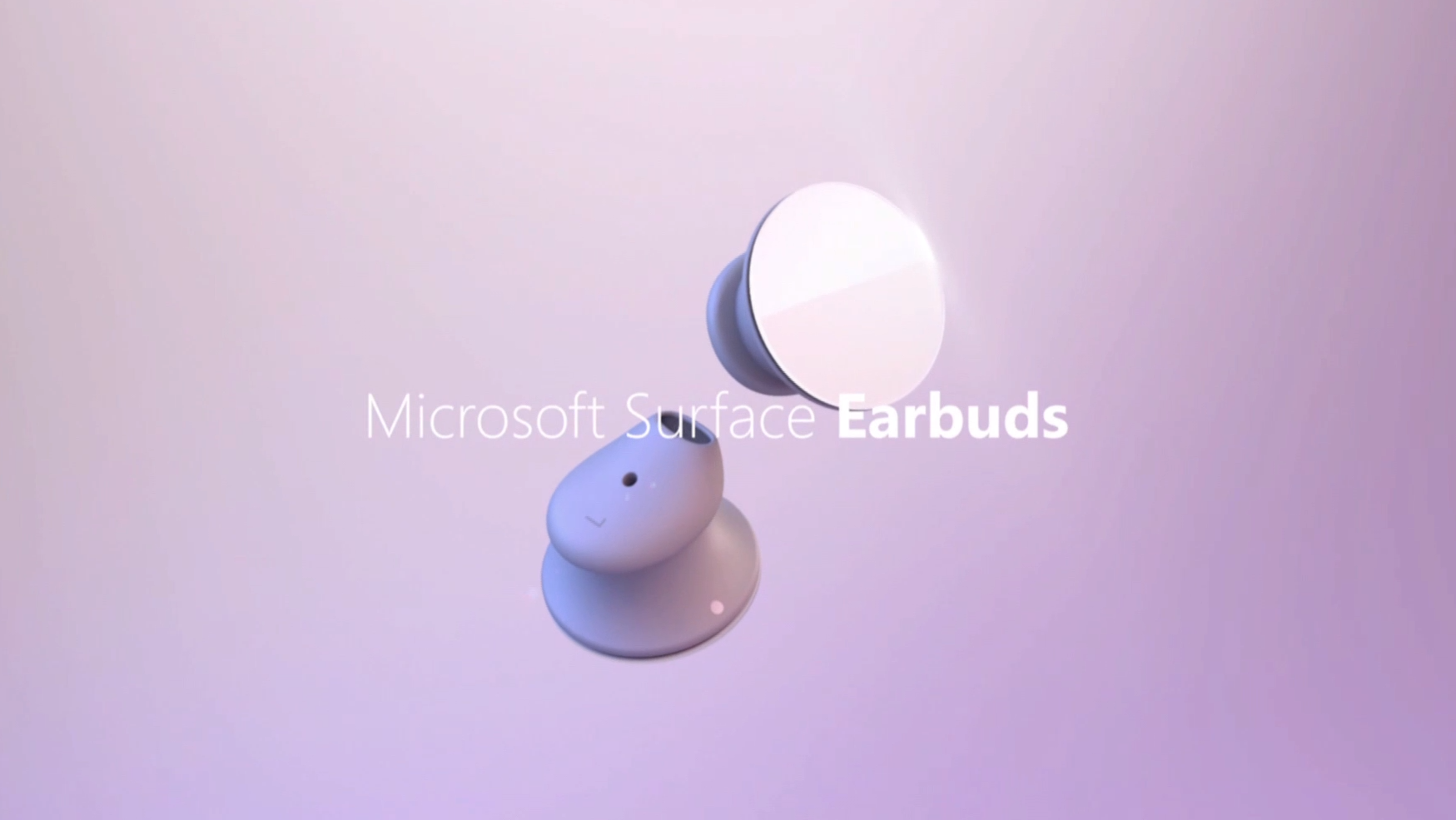MICROSOFT

Company unveils the Surface Earbuds: Wireless audio "with a little magic"
Along with its (impressively varied) new PCs, Microsoft also introduced its first ever true wireless earbuds today (October 2, 2019). These Surface Earbuds are capable of noise-canceling and voice-activation features. However, they are also designed to carry out tasks such as slide-switching and translation during PowerPoint presentations.
Microsoft debuted its inaugural take on the truly wireless earbud as part of its 2019 Surface Event. These new wearables appear intended for productivity, although they also have a "directional dual-mic array" to limit background noise so as to enhance everyday use.
The Surface Earbuds eats in a pill-shaped charging case similar to that of the Samsung Galaxy Buds. However, some may notice that their outer faces appear more dish-like (and thus a lot more noticeable while wearing) compared to other devices in their category. This is due to their touch-control support. These functions, as with many other wireless earbuds, enable track management while music is playing. However, this feature appears to be exclusive to Spotify in this case.
However, touch controls go a lot further than this in the Surface Earbuds. They are equipped with Office 365 integration, which allows for productivity advantages such as on-the-go dictation. It also allows a user to use the Earbuds as a sort of mouse when giving a PowerPoint presentation. This does not merely extend to changing slides, but also converts a user's speech into captions.
This facility even applies when presenting to audiences in different languages; In fact, the Surface Buds can do this in over 60 different tongues. This is done via Microsoft Azure's Cognitive Services co-ordinating with relevant Office software. The Surface Buds will be available for the 2019 holiday season at a price of $ 249.
D. Donnell

No comments:
Post a Comment